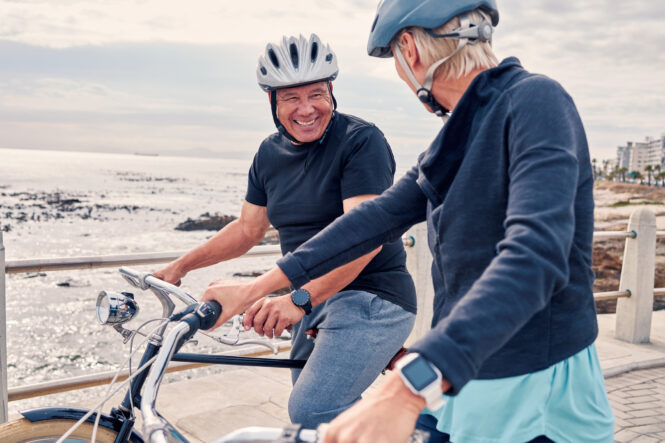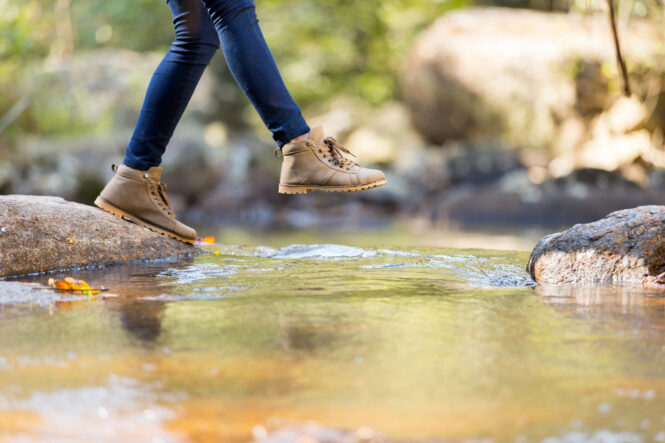In the summer heat, nothing feels better than a cool dip in the pool. Not only is that cool water refreshing, but it can also help relieve the pain and symptoms of arthritis. So, if you are plagued by achy joints, look no further than the swimming pool in your backyard, your neighborhood or the community center for ways to alleviate arthritis pain.
The buoyancy of water reduces stress on your joints, making swimming an ideal low-impact activity. In addition, if you do your laps in a heated pool, the warm water encourages blood flow, reducing stiffness in muscles and joints.
Swimming is a full-body workout — engaging muscles in your arms, legs, and core to keep you afloat. And there’s evidence to back up its benefits for people with arthritis. A 2016 Journal of Rheumatology study of middle-aged and older adults suffering from osteoarthritis found that a regular swimming routine reduced joint pain and stiffness while improving muscle strength.
If you’re not an experienced swimmer, consider taking a few lessons to help with form. Even if you have logged many hours in the pool, arthritis can affect your technique, so consider consulting with a physical therapist to adjust your stroke if it is causing any pain.
For those who have not swam in a while, gradually increase the number of laps as you get more comfortable in the water and build endurance. It can be difficult to tell when you’re sweating in the water, so be sure to drink plenty of water during and after your workout.
Swimming, however, is not the only aquatic exercise that’s appropriate for arthritis sufferers. Over the past several decades, there has been an explosion of joint-friendly options, including water walking and jogging, water aerobics, and aqua yoga. Like their land-based counterparts, they can also increase cardiovascular fitness, flexibility, and strength in addition to helping with weight management.
Water walking and jogging: Water provides greater resistance than air, making walking or jogging in a pool more challenging than on land, but lower impact. Walking typically takes place in chest-deep water. Consider wearing water shoes to avoid slipping. Jogging can be done in water of any depth. However, the benefit of jogging in deep water is that your feet don’t touch the bottom, so it has zero impact on your joints. Some deep-water joggers use flotation belts to increase their buoyancy and help them stay upright.
Water aerobics: While there are countless variations on the water aerobics theme, classes typically center around rhythmic dance movements and include time for warm up, stretching, and cooling down. Incorporating light weights and pool noodles can make it more challenging, but let your body be your guide.
Water yoga: The physical benefits of land yoga — improved balance, strength and flexibility— extend to the water! Standing poses like warrior one are easily transferable to the pool; others require a little more creativity. For example, a floor-based pose like upward dog can be performed standing up by placing both hands on a noodle, then rolling the shoulders away from the ears and slowly pushing the noodle away while gently arching the back.
The Arthritis Foundation offers aquatic classes taught by certified instructors, so check out whether there are any in your area. Grab your suit and head to the pool to loosen up those stiff joints, ease pain, and improve flexibility.
Remember that before embarking on a new exercise routine, it’s always a good idea to consult with a healthcare specialist, who may have suggestions for a program that’s best suited to your needs.
If you’re not sure about the best exercise for your joint pain, use our Find a Doctor tool to locate an expert in your area.




